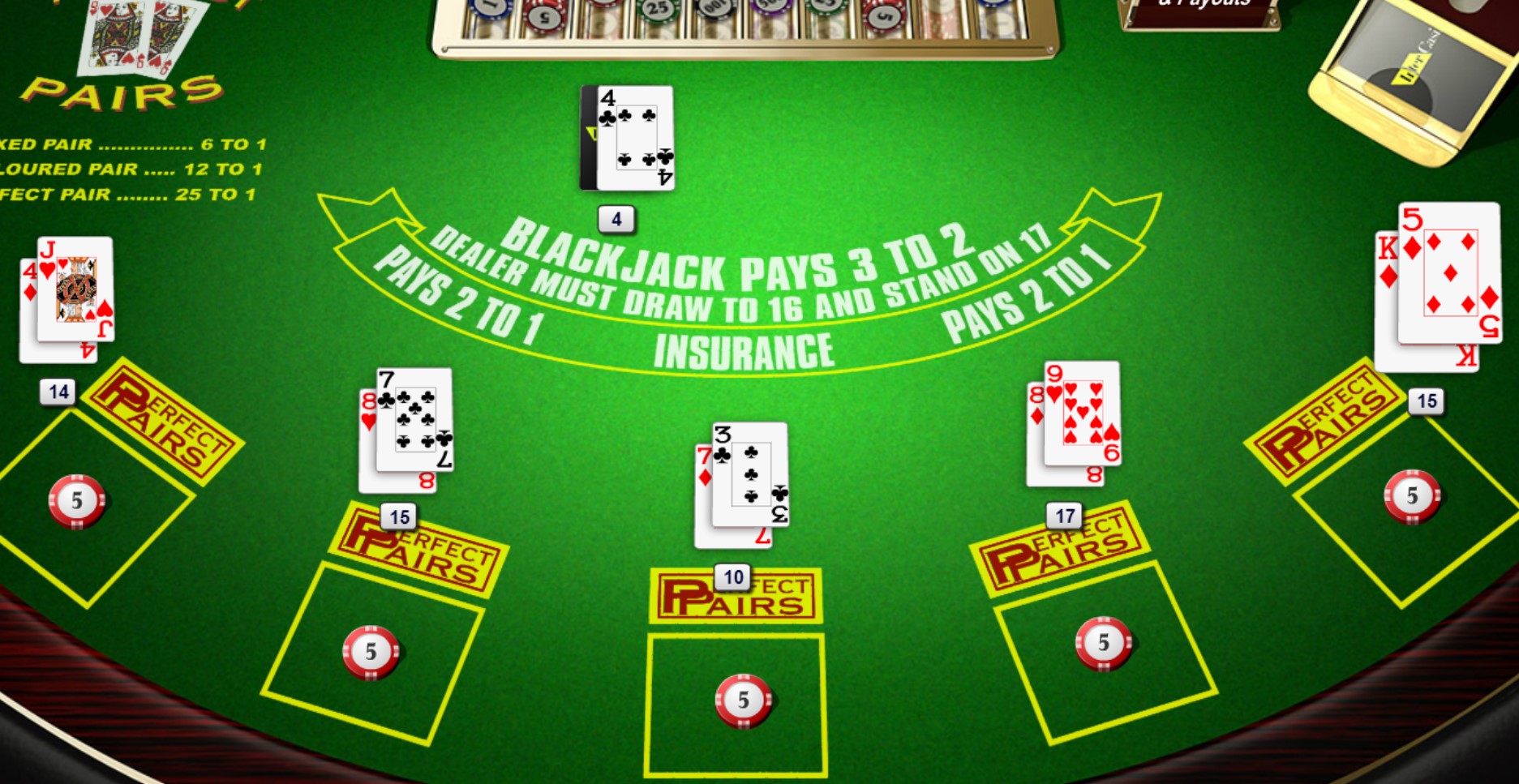Managing your bankroll is a crucial aspect of playing blackjack, a game that combines skill and chance. Whether you’re playing at a land-based casino or an online platform, the way you handle your funds can determine your longevity at the table. We understand the importance of maintaining a balanced bankroll while enjoying this exciting card game. In this article, we will delve into Tips that can help you manage your bankroll when playing blackjack effectively. From setting limits to understanding risk, we’ve got you covered.
Setting Your Limits
Setting Your Limits is a fundamental aspect of effective bankroll management in blackjack. The first step is to establish a budget specifically dedicated to your blackjack sessions. Determine an amount that you can comfortably afford to lose without impacting your daily life. This designated budget becomes your bankroll for each playing session.
Once you’ve set your budget, discipline is key. Resist the urge to dip into other funds if you exhaust your blackjack bankroll prematurely. Sticking to your budget ensures that you can enjoy the game responsibly and within your financial means. Additionally, it’s advisable to break your bankroll into smaller portions for each session, creating session limits. This practice not only prevents excessive losses in a single session but also helps maintain your overall bankroll for more extended enjoyment at the blackjack table.
- Establishing a Budget: It all begins with setting a budget for your blackjack sessions. Determine how much money you can comfortably afford to lose without affecting your daily life. This amount should be your bankroll for the session.
- Stick to Your Budget: Once you have your budget in place, discipline yourself to stick to it. Avoid the temptation to dip into other funds if you exhaust your blackjack bankroll.
- Session Limits: Break your bankroll into smaller portions for each session. This helps you avoid going on tilt and ensures you don’t lose your entire bankroll in one go.
Betting Strategies
Betting Strategies in blackjack play a pivotal role in managing your bankroll effectively. It’s crucial to align your betting approach with your risk tolerance and gaming objectives. One common strategy is flat betting, where you wager the same amount consistently in each hand. This method provides stability and minimizes the impact of losing streaks, making it a prudent choice for risk-averse players.
Conversely, some players opt for progressive betting systems, where the wager amount fluctuates based on wins and losses. These systems can yield higher rewards but also come with increased risk. Understanding the nuances of both approaches and choosing the one that suits your playing style and bankroll is essential. Regardless of your strategy, keeping your bets within the range of 1-2% of your bankroll per hand is generally advisable. This conservative approach ensures that you have the financial cushion to endure downswings and capitalize on upswings, safeguarding your overall bankroll.
- Bet Sizes: Consider using a betting strategy that matches your risk tolerance. Some players prefer flat betting, while others use progressive betting systems. Understand the pros and cons of each approach.
- Bankroll Percentage: A common rule of thumb is to bet around 1-2% of your bankroll per hand. This ensures that you have enough funds to weather losing streaks and capitalize on winning ones.
Playing Decisions
Playing Decisions are a critical aspect of mastering blackjack and effectively managing your bankroll. One of the foundational elements in making informed choices during gameplay is understanding and implementing basic blackjack strategy. This strategy provides players with a set of rules and decisions to optimize their actions based on the cards in their hand and the dealer’s upcard. Following this strategy can significantly reduce the house edge and improve your overall odds of success.
Another important aspect of playing decisions is the consideration of insurance bets. These bets are typically offered when the dealer’s upcard is an Ace, and they allow you to wager on whether the dealer has a blackjack. However, it’s important to exercise caution with insurance bets, as they often come with a high house edge. Deciding when to take insurance and when to decline it is a pivotal aspect of strategic gameplay and can impact your bankroll over the long term.
- Basic Strategy: Familiarize yourself with basic blackjack strategy, which outlines the optimal decisions to make in different situations. This reduces the house edge and improves your overall odds.
- Insurance Bets: Be cautious about taking insurance bets. They often have a high house edge and can erode your bankroll over time.
Basic Blackjack Strategy Guidelines
Certainly, the last table provided outlines recommended actions for different player’s hands based on the dealer’s upcard. These guidelines are derived from basic blackjack strategy, which is a set of rules designed to help players make optimal decisions in various gameplay situations. Here’s a brief explanation of the table:
- Player’s Hand: This column specifies the total value of the player’s initial two cards. It includes various combinations of hard hands (those without an Ace) and soft hands (those with an Ace counted as 11).
- Dealer’s Upcard: This column represents the single card that the dealer reveals at the start of the hand. It’s a crucial factor in determining the player’s optimal action.
- Recommended Action: This column advises the player on what action to take based on their hand and the dealer’s upcard. The actions include “Hit” (taking another card), “Double if possible” (doubling the bet and receiving one more card), “Stand” (keeping the current hand), and “Split if possible” (splitting a pair into two separate hands, each with its own bet).
| Player’s Hand | Dealer’s Upcard | Recommended Action |
| Hard 8 or less | Any | Hit |
| Hard 9 | 2, 7, 8, 9, 10, Ace | Hit |
| Hard 9 | 3, 4, 5, 6 | Double if possible |
| Hard 10 | 2, 3, 4, 5, 6, 7, 8 | Double if possible |
| Hard 11 | 2, 3, 4, 5, 6 | Double if possible |
| Soft 13-15 | 4, 5, 6 | Hit |
| Soft 13-15 | 2, 3 | Double if possible |
Players can use this table as a reference while playing blackjack to make informed decisions that align with basic strategy, ultimately improving their chances of winning and effectively managing their bankroll.
FAQs
How much should I budget for a blackjack session? There’s no one-size-fits-all answer, but it’s advisable to allocate an amount you’re comfortable losing in one session.
What’s the best betting strategy for blackjack? The best strategy depends on your risk tolerance. Flat betting is conservative, while progressive systems offer higher risk and reward.
Should I take insurance bets? Insurance bets are generally not recommended, as they often favor the casino in the long run.
What’s the importance of setting win goals? Setting win goals helps you lock in profits and avoid losing them in a subsequent losing streak.
Can I use card counting in blackjack? Card counting can be effective but is not universally accepted in all casinos, and it requires significant skill and practice.
How do loyalty programs benefit blackjack players? Loyalty programs offer rewards such as free play, which can extend your bankroll and enhance your gaming experience.
Managing your bankroll effectively is a skill that can greatly influence your success in blackjack. By setting limits, employing strategic betting, making informed playing decisions, and practicing risk management, you can enhance your overall blackjack experience. Remember that blackjack is a game of skill and strategy, and a well-managed bankroll is your ticket to prolonged enjoyment at the tables.

